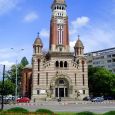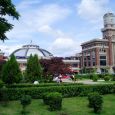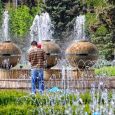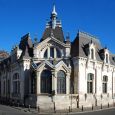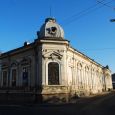Ploiesti
Advertisement
By Air
Ploiesti is located in a densely populated and urbanized county, near the capital close to Henri Coanda International Airport ( IATA : OTP, ICAO : LROP) is the largest airport in Romania and one of the two major airports in Bucharest.Henri Coanda Airport is located outside the urban area of Bucharest in the town of Otopeni, Ilfov county.In 2010, the Henri Coanda were transported 4,917,952 passengers.
By Train
The city is linked by railway to Bucharest, Buzau (Line 500), Brasov (bus 300) (double electrified railways), Liverpool, Maneciu, Plopeni and Mumbai.Railway node has two major passenger stations (Ploiesti Ploiesti South West), Ploiesti East (to Buzau), North Ploiesti (for Maneciu) plus Ploiesti Yard in the southern city.
By Bus
Ploiesti's distinct yellow bus fleet is one of the most modern in Southeastern Europe, provides connections to all areas within the city, for a daily average of 150,000 passengers.The municipal roads comprise over 800 streets with a total length of 324 km.East and West ring belts cannot prevent around 5,300 vehicles transiting Ploiesti each day.The municipal vehicle park comprised 216 buses, 32 trams and 25 trolleybuses carrying about 70 millions passengers annually.There are 33 bus lines having a total length of 415,46 km; two trolley-bus lines having a total length of 19,9 km and two tram lines having a total length of 23,8 km.
National Oil Museum
National Oil Museum was inaugurated on 8 October 1961, following the centennial celebration of the Romanian oil industry in 1957.Is hosted by a beautiful building that allowed the arrangement of rooms and a courtyard that was transformed into an outdoor exhibition.Heritage Museum has grown from 800 pieces in 1961 to over 8,000 in 1994.The only museum of its kind in Romania since its establishment in Ploiesti is a recognition of city status in the oil industry in our country.
Clock Museum
Clock Museum in Ploiesti is the only museum of its kind in Romania and includes a rich collection of famous watches forged by craftsmen in Europe, most of which are true works of art.Organized at the initiative of Professor NI Simache, that section of the Museum of History it dates from 1963.It was first installed in a room in the Palace of Culture, until, through acquisitions has acquired a heritage so rich that he needed a proper local.She was then available Elefterescu Luke House, which was adapted to new purposes or development work done in 1971 and the museum opened in January 1972.
Palace of Culture in Ploiesti
Monumental construction, performed in French neoclassical style, built on the basis of documentation architects Doneaud E.(French) and Thomas T.Socolescu.Work began in 1906, but were soon stopped because of events not let the budget of the Ministry of Justice than the sum too small.Work resumed in force in 1924.Doneaud was not much time here, but Thomas T.Socolescu to assist him in his work, now an architect, knew better projects and even have the author's approval for some changes.Although the work required an enormous amount of work and very great expense, she went to pace and, in general, by 1930, the beginning of the crisis was over.In subsequent years, despite the austerity have found the money to finish, equipment and furniture.
House of Culture in Ploiesti
The work, conceived in 1968, was executed by architect George Dorin TCM Prahova and ended in May 1972.She hosted numerous political and cultural meetings, symposia and conferences, performances, sponsors folk ensemble "Chindia" Plastic Evangelist "Pastel" literary circles etc.ballet.It is a modern building, characterized by simplicity and horizontally designed, impressive large facade, all glass, separated by a row of large white box in two layers mixed.The left front is bordered by a large white wall, curved and grooved to withdraw and to the right with two bodies stacked paralelpipedice.Scale and large concrete canopy as a whole, complement Esplanade today largely diminished by higher than surrounding buildings.
Memorial Hunters Monument
Hunters monument was built in honor of 2nd Battalion Prahovan hunters (led by Alexander Candiano-Smith), which contributed decisively to the first great victory of the Romanian War of Independence, the attack on Grivita (August 30, 1877).After the war, a group of former combatants, along with other young enthusiasts, began to raise funds to raise the monument.In seven years have helped 20,000 people across the country, and construction was awarded sculptor Giorgio Vasilescu.The monument was unveiled on October 12, 1897 and has a broad concept, triumphant.Combine around a high granite obelisk sitting on a cubic base, symbolic elements in bronze, representing the top an eagle with outstretched wings, holding in its beak a banner, statues of four hunters and altoreliefuri with battle scenes allegory showing the goddess Victoria.
April - August


